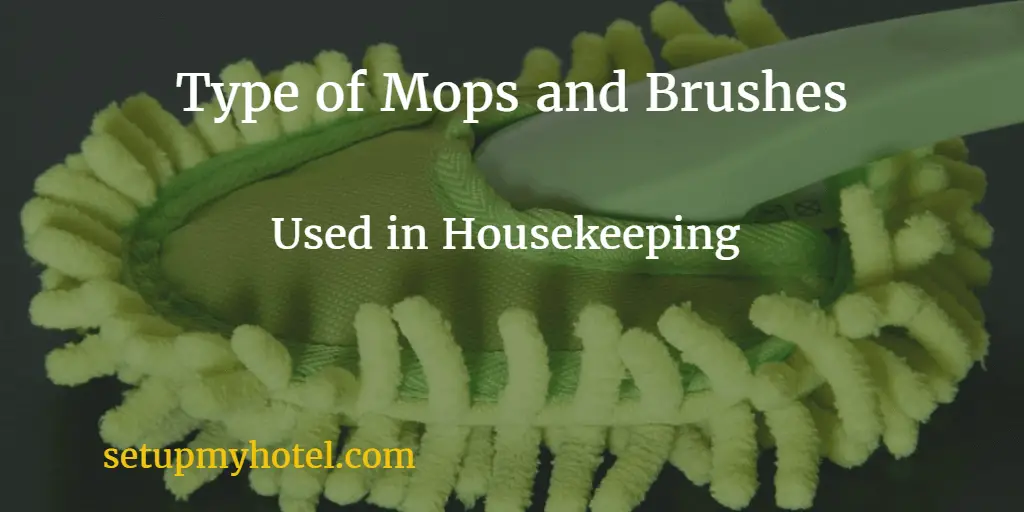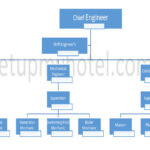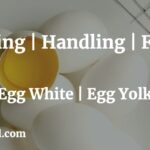Different Types of Brushes and Mops Used in Housekeeping
Keeping a house clean and tidy requires the use of various cleaning tools, including brushes and mops. With so many different types of brushes and mops available in the market, it can be challenging to determine which tool will work best for specific cleaning tasks.
Bristle brushes are one of the most common types of brushes used in housekeeping. These brushes come in a variety of sizes and shapes and can be used for a range of cleaning tasks such as sweeping floors, scrubbing surfaces, and dusting furniture. For delicate surfaces such as polished wood or glass, softer bristle brushes are recommended to avoid scratches.
On the other hand, mops are essential tools for cleaning floors, especially in areas with high traffic or frequent spills. Traditional mops with cotton or synthetic fibers are commonly used for wet mopping of floors, while microfiber mops are increasingly popular due to their ability to trap dirt and bacteria effectively. Additionally, steam mops can be used for deeper cleaning and disinfecting without the need for chemicals.
In conclusion, selecting the right brush or mop for a particular cleaning task can make the process more efficient and effective. Knowing the different types of brushes and mops available and their intended use can help homeowners and housekeepers achieve a clean and hygienic living space.
Types of Brushes and Mops Used in Housekeeping
1. Types of Brushes
Brushes are designed to remove dry, wet, and or ingrained dust and dirt from hard or soft surfaces. There are two types of Brushes Hard Brushes and Soft Brushes each used for different purposes.
Hard Brushes
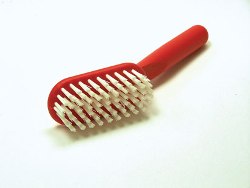
Hard brushes have bristles that are fairly stiff and well-spaced out. They are most suitable for the removal of heavy soil and litter from carpets and for cleaning rough surfaces. e.g. – deck scrubber for floors
Soft Brushes
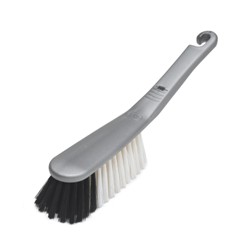
Soft brushes have bristles that are fairly flexible and set close together. They help to remove loose soil and litter on hard and smooth surfaces.
Such brushes may be designed to dust carpets and furniture, especially those that are made of cane and wicker.
2. Types of Mops (Dry and Wet)
Dry Mops
Also called dust control mops, these are designed to remove soil and debris from floors, walls, and ceilings without raising and dissipating dust. These mops generally consist of a handle to which a metal frame is attached. The mop head is either inserted into the frame or stretched over it, according to the type.
Example of Dry Mops:
Mops with impregnated fringes
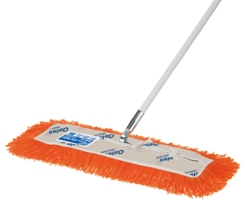
These mops consist of dense cotton fringes, approximately 15 cm in length, inserted into a metal frame of 15-120 cm length. The dust is held onto the mops by the oil.
Impregnated mop sweepers
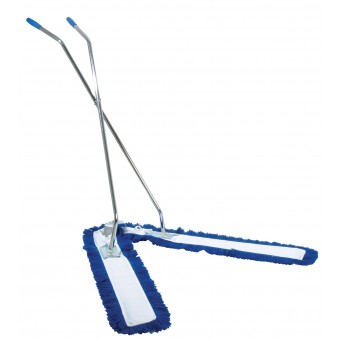
These mops consist of a double-hinged frame and are thus called ‘V-sweepers’ Also Known as scissors action sweepers. The mops can be pre-impregnated or may require impregnation before each use. Following impregnation, sufficient time must be allowed for the mineral oil to cure the fibers; otherwise, the mop will leave a film of oil on the cleaned surface due to improper curing.
Static mops
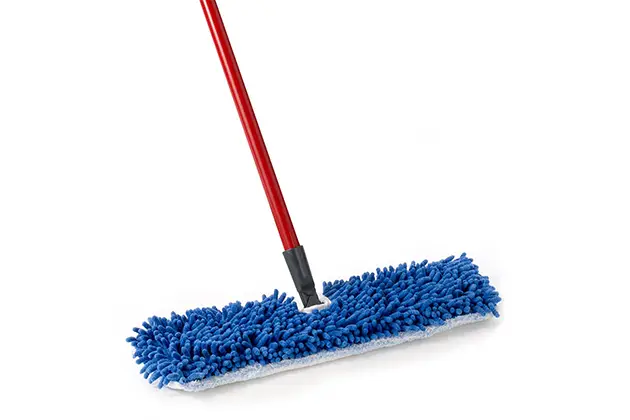
These mops consist of acrylic, nylon, or polyester strands fixed to a backing stretched over a metal frame. When in use, the fringes splay out to form a large surface area, holding dust using a static charge that builds up on the fringe. Static mops are more easily maintained than impregnated mops.
Disposable mops
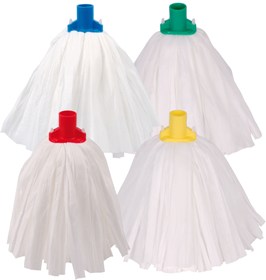
These mops consist of a handle with a soft pad at the end, onto which a cheap cotton or synthetic material is affixed.
Wet Mops or Damp Mops
Wet mops are used in conjunction with buckets for the removal of dirt adhering to a surface. The mop heads can be made of cotton, sponge, or any other fiber capable of absorbing water or moisture well.
Some examples of wet mops are Kentucky mops, Do-All Mops, Foss Mops, Squeege, etc.
Kentucky mops
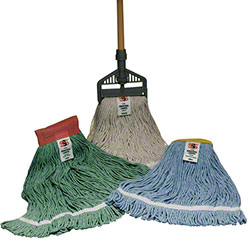
These mops consist of cotton strands fixed to a length of cotton fabric which is in turn inserted into a flat metal stock. They are available in weights ranging from 330g to 670g.
The strands may be stitched together or unstitched. The stitched ones are less likely to tangle, can be laundered more easily, and are likely to last longer than un-stitched mops.
Do-all mop

These mops consist of strands of twisted cotton fixed to a circular metal plate which in turn is fixed to a stock.
Foss mop

Foss Mop consists of a dense cotton fringe inserted into a heavy metal stock
Sponge mops
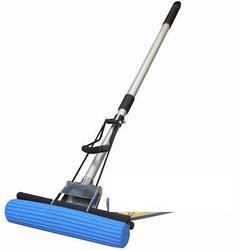
These consist of a cellulose sponge fixed to a replaceable, lever-controlled head, hinged for wringing out and attached to a long handle. Using a sponge mop is one of the easiest ways to wash a hard floor. Short-handled sponge mops are also available for cleaning windows.
Squeegee

